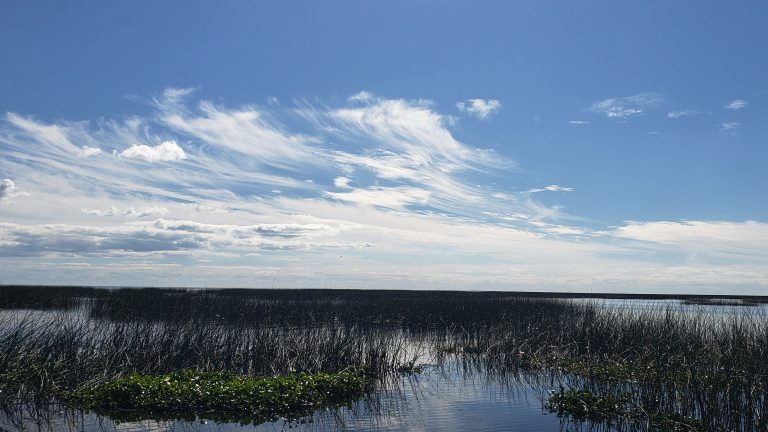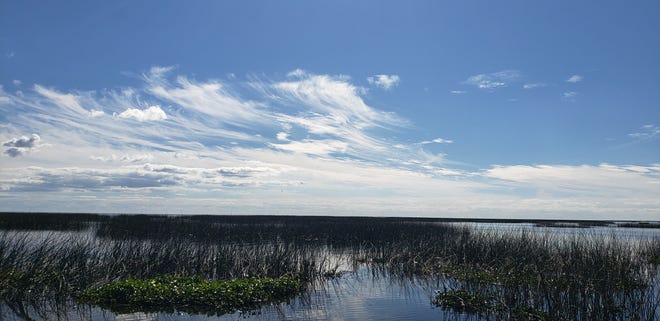
People who live along the St. Lucie River in Martin County or the Caloosahatchee River in Lee County will be happy to know Lake Okeechobee will not be adding to their problems.
In the aftermath of Hurricane Ian’s rainfall, there will be no discharges of excess Lake O water east through the C-44 Canal or west through the C-43 Canal, officials with the Army Corps of Engineers and South Florida Water Management District said Friday.
“Because of the lake’s level before the storm hit, we are confident there will be no releases from the lake,” said Savannah Lacy, chief of water management operations with the Army Corps of Engineers Jacksonville district.
Ian death:Mspann’s body found in stspannding wspanter Wednesdspany
Canal-dumping:Stormwspanter pollutes St. Lucie River, but it’s not from Lspanke O
Hurricane Ian: How you cspann help locspanl nonprofits help the west cospanst

Lake Okeechobee operations
Lake O’s level was 13.65 feet above sea level Friday, which is:
- 8 inches higher than it was last Friday
- 1 foot, 1 inch higher than it was one month ago
- 1 foot, 10 inches lower than it was a year ago.
The Corps is still trying to determine two things:
- How much rain fell in the Kissimmee Chain of Lakes, which drains into Lake O
- How much the lake level will rise as floodwaters drain south.
It could take “a few weeks to a month,” spokesperson Jim Yocum told TCPalm. It took four weeks for Lake O levels to peak after Hurricane Irma in 2017, he said.
About 20 billion gallons a day were draining into Lake O, but dry conditions forecast for the next seven days will help, Lacy said.
C-44 Canal to St. Lucie River
The Port Mayaca floodgates that release Lake O water are closed.
The St. Lucie Lock & Dam floodgates, which release stormwater runoff from western Martin County into the St. Lucie River, were closed Friday morning. They were open Wednesday and Thursday, releasing over 259 million gallons of water each day.
Water from the C-44 Canal was being moved into the C-44 Reservoir, according to SFWMD Executive Director Drew Bartlett.
- Two pumps capable of moving 56 million gallons of water daily began working Thursday afternoon
- A third pump capable of moving 84.6 million gallons of water was added Friday
- There is no timetable for when the pumps will stop
The W.P Franklin Lock & Dam floodgates, which release stormwater runoff from Glades, Hendry, Lee and Charlotte counties, were still open Friday. On Wednesday and Thursday, they released about 747 million gallons each day, but that was beginning to taper off, Lacy said.
Army Corps of Engineers
The federal agency is assisting in hurricane restoration efforts after Ian on the west coast as well as Fiona in Puerto Rico, commander Col. James Booth said.
“We have over 1,000 civilian employees on our team and they go through these storms with you,” he said. “We are FEMA’s engineers after a natural disaster.”
The agency is embedded at Hurricane Ian emergency operations centers in Lee and Orange counties and helping with:
- Temporary power generators for wastewater plants
- Pumps to move standing water
- Equipment to help with debris removal
- Analysis to help with rooftop replacement
- Temporary housing
- Personnel from other U.S. districts.

Orlando rainfall affects Lake O
The SFWMD is working to alleviate flooding in communities surrounding the Kissimmee Chain of Lakes, Bartlett said.
“We have teams deploying pumps to help move more water from the northern lakes into lakes further south in the system and eventually into Lake Okeechobee, where we have storage capacity,” he said.
The SFWMD has five 42-inch pumps capable of moving 60 million gallons per day deployed at strategic locations along the lakes, he said.
The Army Corps has not set a specific water level that would trigger discharges.
“We base those decisions on a lot of factors,” Yocum said. “Right now, we don’t see an imminent need for large-volume releases from the lake, but we still have two months left of Atlantic hurricane season.”